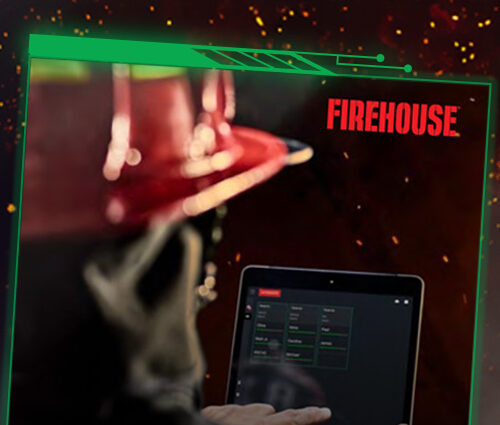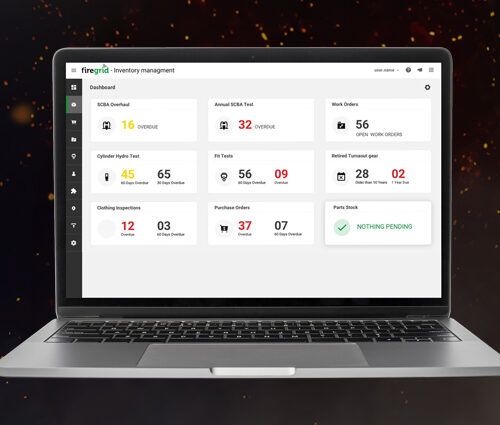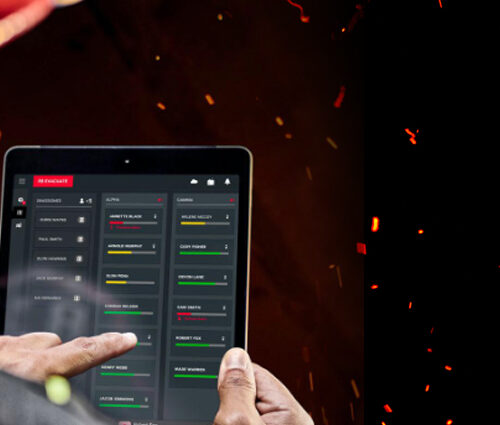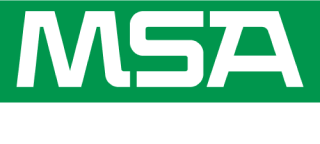
Create a network of safety and increased situational awareness with these tech solutions.
Safety on the fireground isn’t a solitary endeavor. While it’s important to make smart decisions for yourself, ensuring you come home at the end of the day requires a team effort. Communication is essential, not only between each individual firefighter but also with incident command and, sometimes, with individuals who are off-scene.
For decades, two-way radios have been the primary tool used in the fire service to accomplish this communication, letting others know if you’re in danger or providing critical data that could better inform incident command’s next decision.
However, these devices can only do so much, particularly in environments where there’s minimal connectivity. It’s estimated that 40% of mayday calls transmitted by firefighters on-scene never make it to rescue teams due to radio communication issues.
As technology has evolved, departments now have a larger selection of devices available to them to help ensure firefighter safety and increase situational awareness. Adopting these advancements is not only critical from a safety and connectivity standpoint, but also allows for greater accountability and efficiency.
The Connected Firefighter Platform by MSA Safety enables departments to build a network of safety through multiple devices and software components. While each has its own primary functions, they work together to close information gaps and provide benefits both on the fireground and post-scene.
Starting From the Ground Up
Being able to breathe while on the fireground is an essential part of staying safe. In 2009, MSA Safety decided to transform the typical SCBA and design a new version that better met the needs of firefighters. Five years later, the G1 SCBA was launched.
While it provides the same features of an SCBA that firefighters are used to, the G1 SCBA’s design removes many of the historically “bolted-on” features from the face piece and integrates them elsewhere. This eliminates the need to continuously add components as new technology becomes available.
“We still accomplished the goal of a heads-up display and voice amplification but really optimized where they were located and how they were powered,” said Dom Berardinelli, segment marketing manager, respiratory protection at MSA Safety. “We have one central battery source with the G1 SCBA. It’s a rechargeable battery and at the end of the day, you don’t have any electronics, weight or snag hazards on the face piece.”
The rechargeable battery feature saves departments time, eliminating the need to replace dozens of alkaline batteries across an entire fleet. When new advancements are made in technology, each G1 SCBA’s firmware can be updated, allowing for improvements over time without the need for additional parts.
Lighter gear with fewer snag hazards certainly enhances safety on the fireground, but it’s the Bluetooth connectivity of the G1 SCBA that really enhances connectivity. The microphone inside of the G1 SCBA can connect to a Bluetooth-enabled two-way radio, operating much like a cell phone conversation conducted via Bluetooth using the speakers inside a vehicle.
The G1 SCBA also gathers critical data during operation, including air status and alarm status, and sends this information to other components of the Connected Firefighter Platform.
Three Apps with Many Functions
Further building upon the ideas of safety and connectivity, the team at MSA Safety developed a suite of software apps to help departments easily access and understand the data that’s transmitted by firefighters’ devices. Named FireGrid, each of its three components works to support crews both on- and off-scene.
-
FireGrid Monitor
Designed to be used on a tablet, FireGrid Monitor gathers the data from other Connected Firefighter Platform devices and compiles it into an easy-to-use system. Incident command can stay abreast of who is on-scene and which products they are using.
A range of alarms and notifications are also displayed on FireGrid Monitor, inclusive of allowing incident command to see if someone is running low on air, if someone has not moved within a set time or if a search for a downed firefighter is occurring. Tracking of each Connected Firefighter Platform product helps identify if someone is in danger and helps incident command manage the scene and make more confident decisions.
-
FireGrid Web
On-scene data isn’t only captured for use during an active scene. FireGrid Web allows departments to access an array of information for both analytical and inventory purposes. A complete log with timestamps noting when an incident started and ended, which alarms went off and more can be used to better understand what happened.
“You’re not depending on the people on-scene and their memory of what happened,” said Jasmine Spencer, fire service marketing manager, thermal imaging cameras, portable gas detectors and Connected Firefighter Platform at MSA Safety. “This is factual information that is stored on their account for training purposes.”
-
FireGrid Configure
Each device connected to the Connected Firefighter Platform can also be registered on FireGrid Web, allowing departments to assign what personnel they belong to and note if devices are in service, out of service or decommissioned.
Soon to be expanded to encompass a variety of products in the Connected Firefighter Platform, FireGrid Configure is a mobile app that achieves personalization and maintenance functions. It also allows departments to pull data logs and update firmware as needed.
Redefining Search and Rescue
When the safety of firefighters is on the line every day, using redundant communication systems while on-scene works to increase each crew member’s situational awareness. While the G1 SCBA tracks air and alarm data, the LUNAR Connected Device assists with search and rescue functions.
“It offers connectivity for the entire team,” said Spencer. “The devices are constantly communicating back and forth. When one device is in alarm, all the LUNAR devices in the network are alerted.”
Three types of alarms can be activated depending on the situation:
- A motion pre-alarm will sound if a LUNAR device is idle for 20 seconds as the device will think you are incapacitated. If you continue to remain stationary for another 10 seconds, a full alarm will be triggered.
- In an emergency when an instant alarm is needed, holding down one of the two buttons on the LUNAR device for three seconds will trigger a manual alarm.
- If the LUNAR device is malfunctioning in some way, a hardware alarm will sound.
When an alarm is triggered, Firefighting Assisting Search Technology (F.A.S.T.) is used to provide both distance and direction to other LUNAR devices, aiding in a more precise search and rescue effort.
“In addition to being able to get these distance and direction measurements, you’ve never lost your thermal imaging,” said Spencer. “We say you’re able to identify hot spots and heartbeats. While you’re trying to rescue someone, it’s important that you have those three components: distance, direction and thermal imaging all at the same time.”
Each LUNAR device can be paired with a crew member’s G1 SCBA via Bluetooth and continues to operate even in environments where there is no connectivity. Using the LUNAR-to-LUNAR network, the devices are always communicating and provide a level of confidence that someone will be able to search for you if needed.
Big Benefits with Few Changes
At first glance, implementing several new types of technology into a department’s standard operating procedures might feel overwhelming. The Connected Firefighter Platform can help crews make more proactive and confident decisions using each device’s data but using every component every time isn’t a must.
“We’re not replacing your traditions and techniques that have worked for so long,” said Spencer. “We are simply infusing technology to help make it easier and more effective. This is a tool in your toolbox for you to use in the correct situation.”
Departments may not need to actively use one or more tools on a given scene, but the products can still collect data in the background for future use.
“A major benefit of providing data is to better inform maintenance procedures,” said Selma Sosic, global product line manager, FireGrid and physiological monitoring at MSA Safety. “Since we can actually tell you how often you’re using the products, maintenance procedures can take place more effectively and departments can make sure everything is ready to go for the next call.”
Additional Updates on the Horizon
MSA Safety’s Connected Firefighter Platform can be updated with ease as new features and enhancements are rolled out. Soon, several new options will be available across the range of products including:
- Enhanced usage-based maintenance for the G1 SCBA through FireGrid Web, helping departments to save time and resources by sending a notification when each SCBA is in need of testing.
- Real-time tracking of each LUNAR device via FireGrid Monitor using the LUNAR devices’ GPS capabilities. This map view feature will better inform incident command and assist in more efficient search and rescue operations.
- Live drone footage through MSA Safety’s partnership with Fotokite. This autonomous drone technology can stream directly to FireGrid Monitor while on-scene.
- The addition of MSA’s Globe turnout gear to FireGrid Web to better track and manage PPE inventory.
As technology continues to evolve, the Connected Firefighter Platform is ready to provide features that further prioritize crew safety and bolster communication.
“We’re here to make their lives simpler,” said Sosic. “The goal with our products is that you’re using familiar devices and firefighters don’t have to change anything about what their job is. What the Connected Firefighter Platform aims to do is make people safer.”
By Courtney Levin, FireRescue1 BrandFocus Staff
This article reprinted with permission of FireRescue1.






